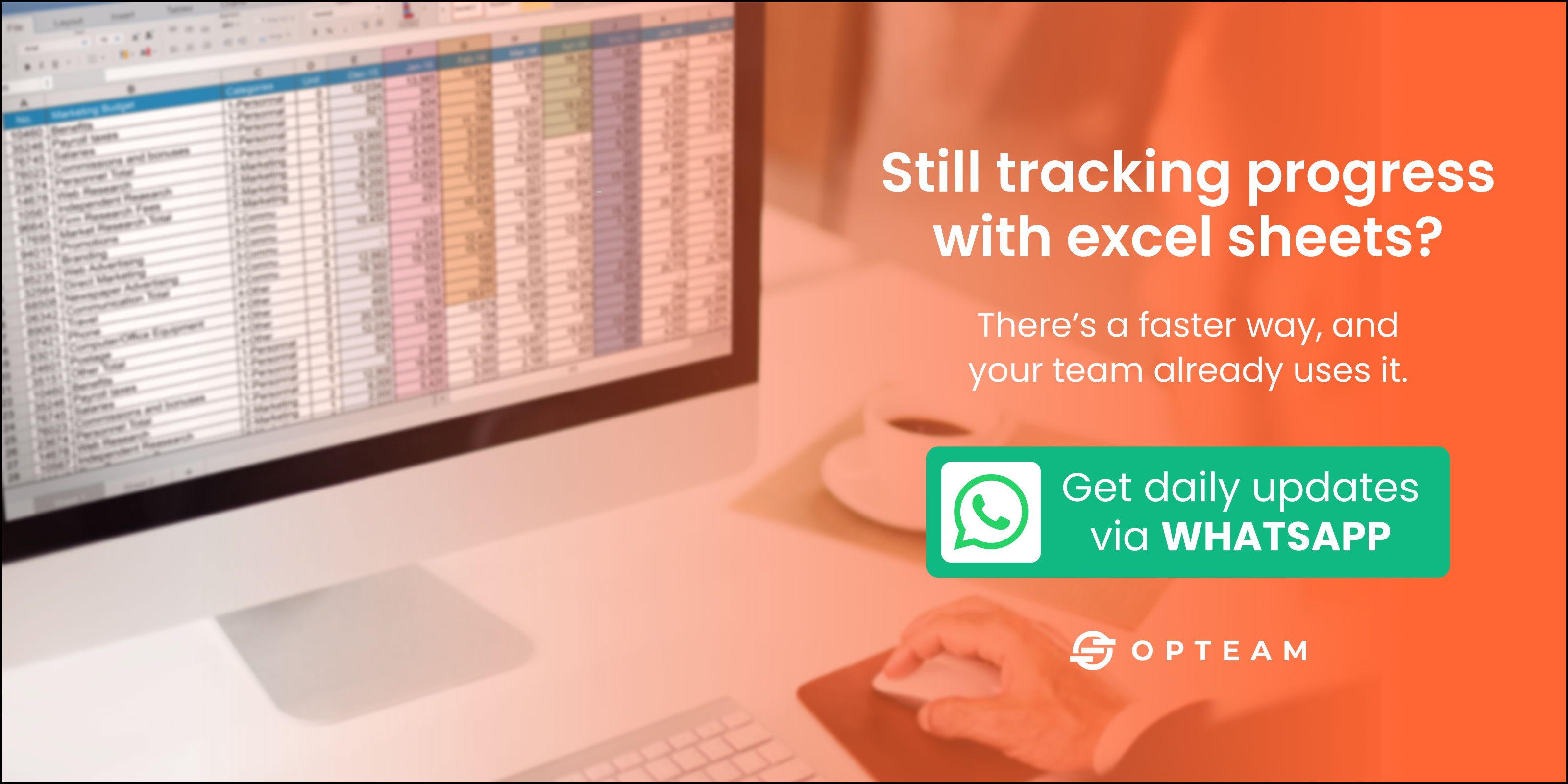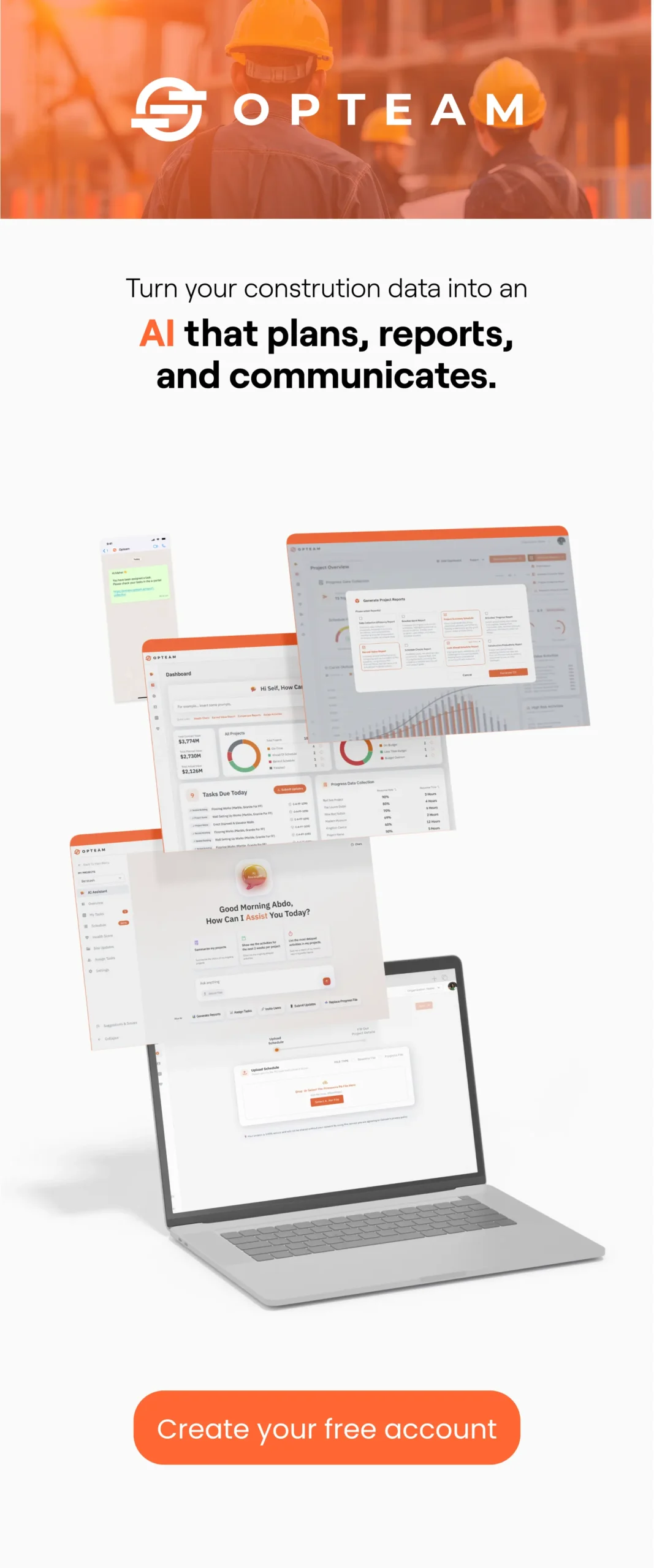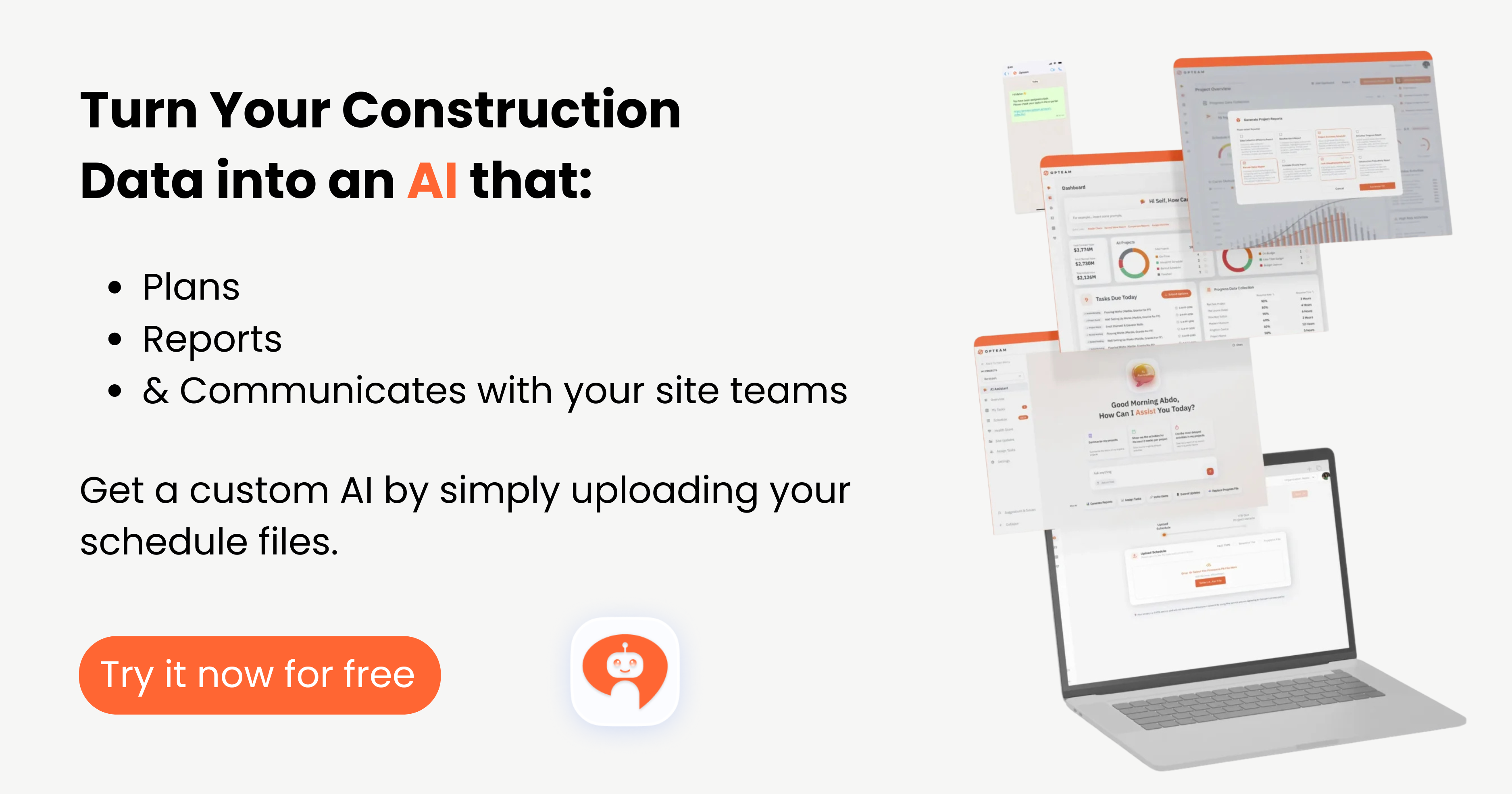In short:
- Cost data in construction refers to all the financial information about materials, labor, equipment, and other expenses tracked during a project.
- Accurate cost data helps teams create budgets, monitor spending, forecast overruns, and make informed decisions throughout the project lifecycle.
- Opteam centralizes your cost data, making it easier to track, analyze, and control project finances in real time.
In the dynamic world of construction, managing costs efficiently is crucial for the success of any project. As the complexity and scale of construction projects increase, so does the need for accurate and comprehensive cost data. But what exactly is cost data in construction? Understanding this essential aspect is key to ensuring projects stay within budget, meet financial goals, and maintain profitability.
In this article, we will delve into the fundamentals of cost data in construction, exploring its significance, components, and how it impacts project management and decision-making processes. Whether you’re a seasoned professional or new to the industry, gaining insights into cost data can enhance your ability to navigate the financial intricacies of construction projects.

What Is Cost Data In Construction?
Cost data in construction refers to the detailed information related to the expenses incurred during the planning, execution, and completion of construction projects. This data encompasses a wide range of costs, including materials, labor, equipment, subcontractor services, and overheads. The primary goal of collecting and analyzing cost data is to ensure projects are completed within budget while maintaining the desired quality and scope.
Key Components of Cost Data
Key Components of Cost Data in Construction
| Component | Description |
|---|---|
| Direct Costs | Costs directly attributable to specific construction activities. |
| Materials | Cost of raw materials such as concrete, steel, lumber, and other construction supplies. |
| Labor | Wages and benefits paid to construction workers, including specialized trades and general labor. |
| Equipment | Expenses for renting or purchasing construction equipment and machinery. |
| Indirect Costs | General expenses not directly tied to specific construction activities. |
| Overheads | General expenses such as office rent, utilities, and administrative salaries. |
| Insurance and Permits | Costs for construction insurance, permits, and regulatory compliance. |
| Subcontractor Costs | Payments made to subcontractors for specialized tasks like electrical work, plumbing, or roofing. |
| Contingency Costs | Budgeted reserve for unexpected expenses or cost overruns. |
| Soft Costs | Expenses not directly related to physical construction, such as architectural and engineering fees, legal services, and project management costs. |
Leverage Opteam Construction Planning and Scheduling Software for Cost Data of Your Projects
Opteam’s comprehensive suite of features is designed to integrate seamlessly with project workflows, ensuring precise cost tracking and control throughout the project lifecycle. Here’s how Opteam can be utilized to optimize cost data management for your construction projects:
Key Features and Benefits of Opteam for Cost Data Management
- Integrated Cost Tracking:
- Real-Time Data Integration: Opteam allows for real-time integration of cost data, ensuring that all financial information is up-to-date and readily accessible.
- Detailed Cost Categories: The software supports detailed categorization of costs, including direct costs (materials, labor, equipment) and indirect costs (overheads, insurance, permits).
- Budgeting and Forecasting:
- Accurate Budgeting: Utilize historical data and predictive analytics within Opteam to create precise budgets and forecasts, helping to allocate resources efficiently.
- Contingency Planning: The software enables the creation of contingency budgets, ensuring you are prepared for unexpected expenses or cost overruns.
- Cost Control and Analysis:
- Variance Analysis: Monitor actual costs against budgeted amounts, identify variances, and implement corrective actions to maintain financial control.
- Trend Analysis: Analyze cost trends over time to identify patterns and make informed decisions to optimize project finances.
- Subcontractor Management:
- Payment Tracking: Keep track of payments to subcontractors, ensuring timely and accurate disbursements.
- Cost Allocation: Allocate costs accurately to various subcontractors, helping to manage and control subcontractor expenses effectively.
- Reporting and Documentation:
- Comprehensive Reporting: Generate detailed financial reports that provide insights into project costs, helping stakeholders understand the financial status of the project.
- Audit Trails: Maintain audit trails of all financial transactions, ensuring transparency and compliance with regulatory requirements.
- Collaboration and Communication:
- Centralized Data: Centralize all cost-related data within Opteam, ensuring that project teams have access to the same information and can collaborate effectively.
- Stakeholder Communication: Facilitate communication with stakeholders by providing them with accurate and timely cost data, enhancing transparency and trust.
Read more:


